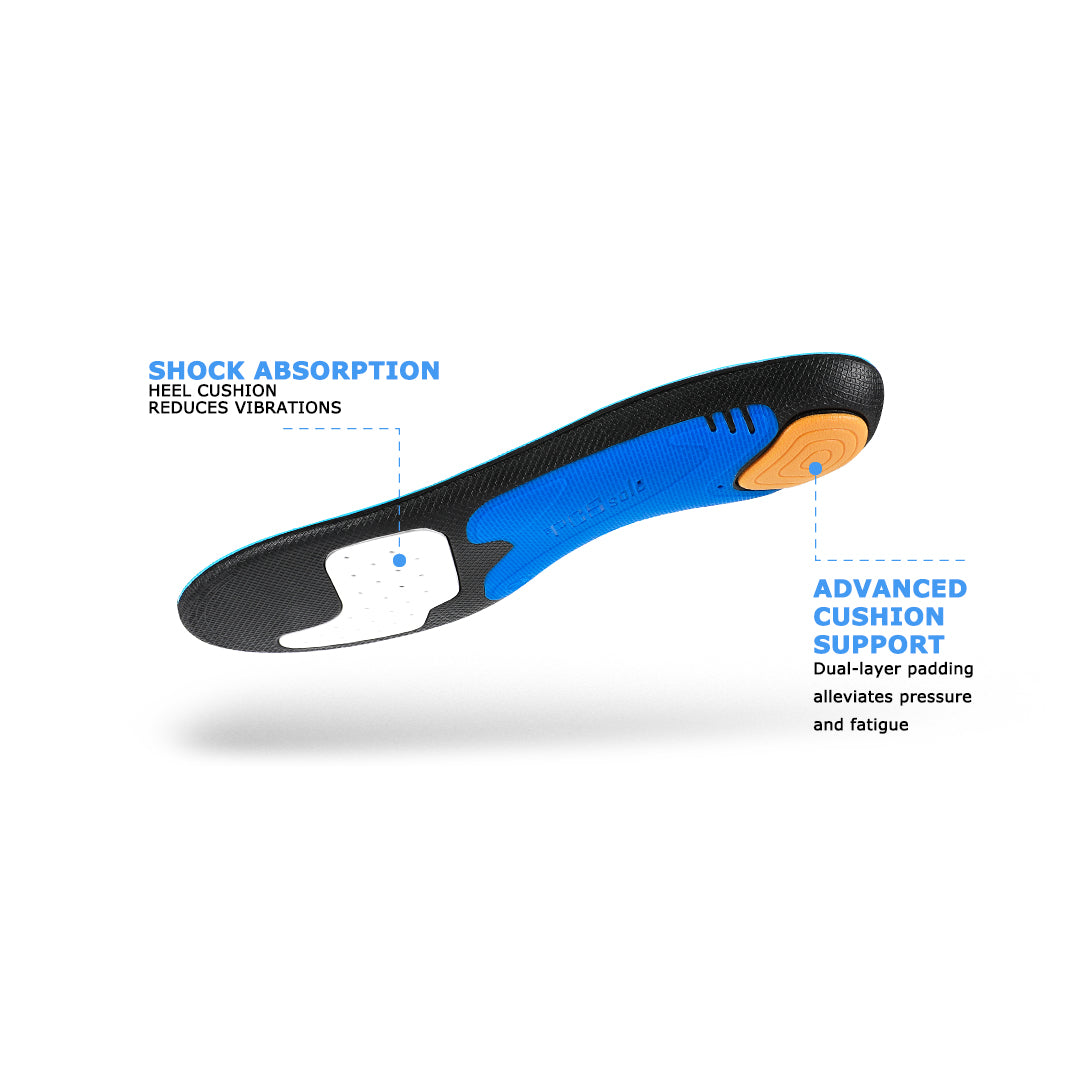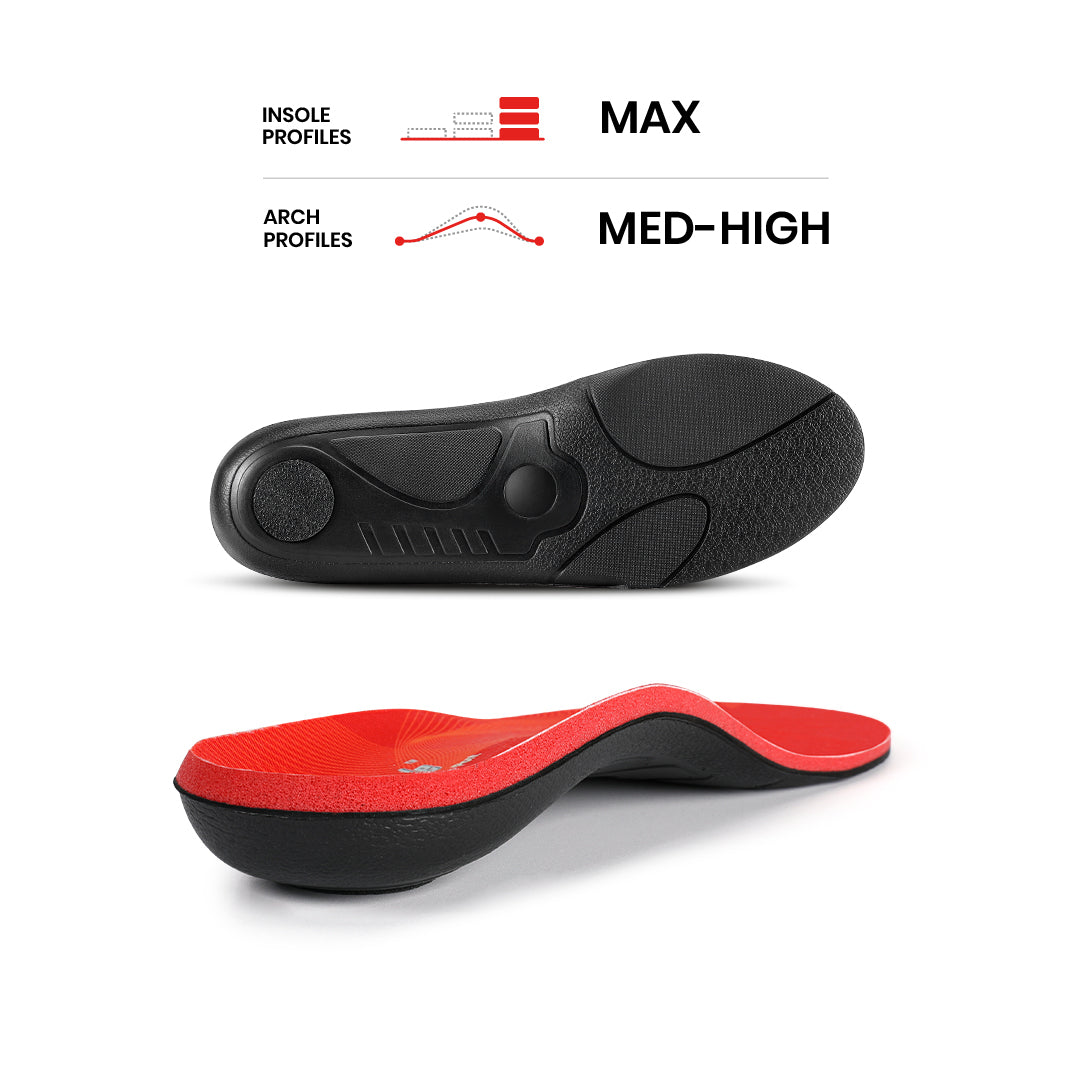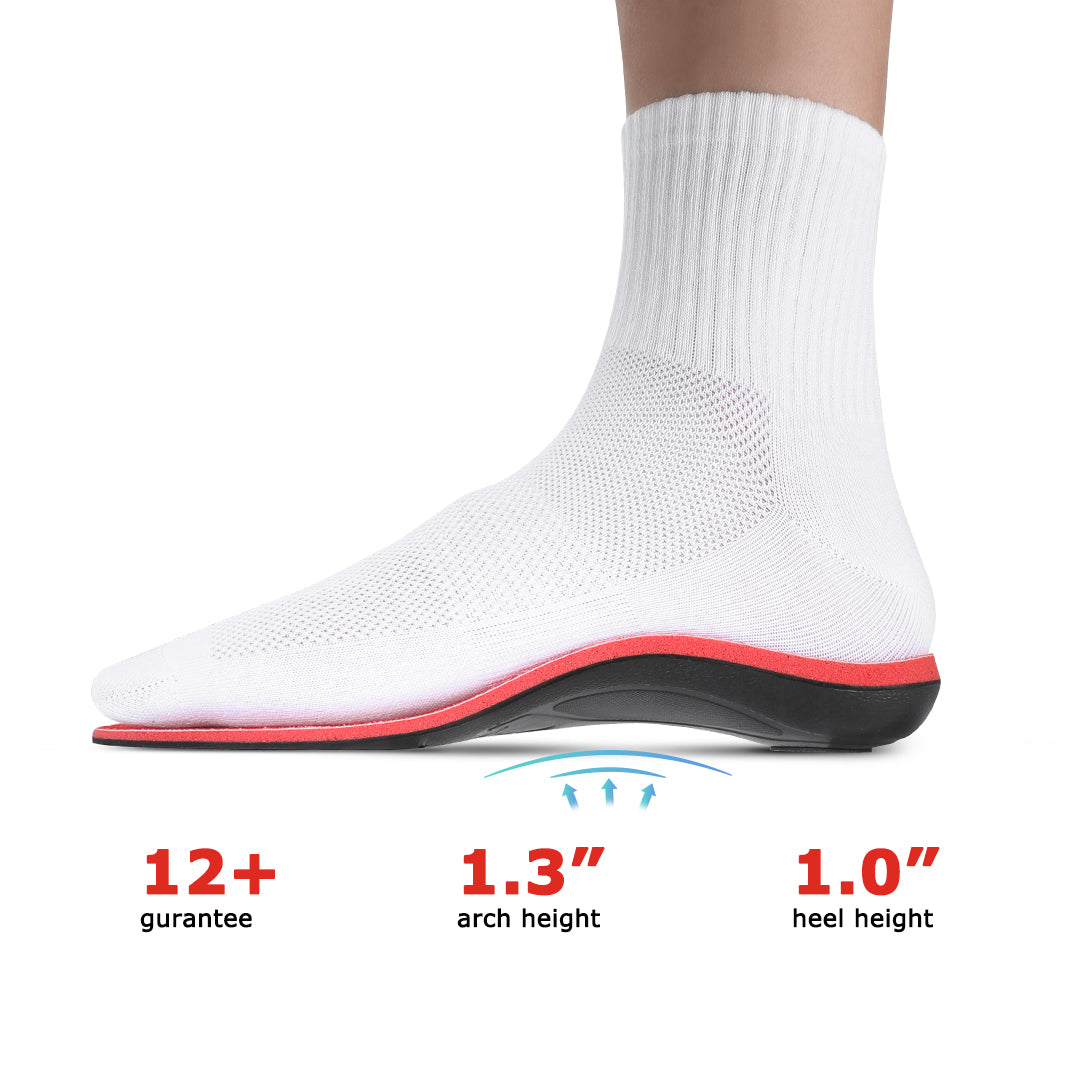
The arch is an important part of the foot structure. Our feet support the weight of the body. The arch not only affects the comfort of daily walking but also directly affects the health of our feet, knees, hip joints, and even spine.
Do you know what types of arches there are? What kind of support is needed for each arch type? Unsupported arches can cause foot pain, which affects walking, and in more serious cases, they can cause long-term damage. Each arch type requires a different support method to ensure proper support and cushioning when walking, standing, or exercising.
Many people don’t know their arch type, but it is one of the important factors to consider when buying shoes or insoles. This is the only way to find and buy shoes that can best support your weight, relieve foot pain, and prevent injuries such as plantar fasciitis.
This blog will provide a detailed introduction to the characteristics of different arch types, instructions for self-testing, and information on choosing the most appropriate support method based on arch type.
What are the types of arches?
Low arch (flat feet)

Symptoms: Low arches, also known as flat feet, are characterized by a very small arch or almost complete contact between the sole and the ground. When you walk or run, your feet may roll inward, which puts extra pressure on your ankles, knees, hips, and back. People with flat feet are also prone to plantar fasciitis, shin pain, and tendonitis in certain parts of the body.
How to choose shoes: Do not choose shoes with too hard or too soft soles or too narrow toes, otherwise it is easy to cause foot pain. The spacious toe space allows your toes to move freely without restriction. Flexible flat feet usually require medium arch support, while rigid flat feet require low arch support to prevent further collapse of the arch.
If you have serious arch problems, be sure to see a podiatrist. They can help identify your arch type and provide valuable insights into your foot health.
How to choose insoles: Many problems associated with flat feet can be solved with the right insoles. PCSsole's Universal Arch Support insole is made of high-quality cushioning layers that adapt to your foot shape, provide all-day comfort, and reduce pressure points. It uses a semi-rigid arch fit and deep heel cup design to improve stability and balance and relieve foot pain.
Normal arch

Symptoms: Moderate arch shape, best support and shock absorption, fewer foot problems, good stability, and proper shock absorption, but may cause plantar discomfort during high-intensity activities.
How to choose shoes: Choose comfortable, non-compressive shoes. A pair of running shoes that provide moderate support and cushioning is very important. Such shoes can ensure that runners have a more stable and comfortable experience during running.
How to choose insoles: If you want to make your feet more comfortable in daily life or work, you can choose our Work Comfort Cushion insoles. If you like running, playing basketball, and other fitness activities, you can choose our Running Flexible Performance insoles.
High arch

Symptoms: With high arches, almost all the force load from walking, running, and jumping is concentrated on the heel and forefoot, which is prone to plantar fascia tension, ankle instability, stress fractures, and foot pain.
Suggestions: Wear supportive shoes and insoles to relieve the pain caused by high arches. However severe cases may require surgery to correct the arches.
How to choose shoes: You should choose shoes with good stability and support, soft and flexible midsoles, and soles with stronger cushioning and shock absorption performance. When you go to the store to buy shoes, you can tell the clerk your purchase needs and they will recommend suitable shoes for you.
How to choose insoles: If your shoes do not have any support function, it is very important to select a pair of insoles with arch support. This Universal Gelcomfort Relief insole from PCSsole is designed with dual-density foam to absorb the impact of each step, protect your feet from pulling up, and reduce fatigue. The gel pad under the foot enhances the cushioning of the heel, and the deep heel cup design can stabilize and support your feet, enhance alignment, and prevent discomfort.
What types of arches do I have?
There are several simple ways to judge the arch.
Wet foot test
Wet your feet, stand on dry paper, and observe the footprints on the paper.
If the footprints you see are relatively complete, with no gaps in the middle, then you are most likely flat-footed.
If most of the footprints you see are obvious, and only the middle and outer parts are not obvious, then you have a normal arch.
If the footprints you see only traces of the soles and heels and almost no traces of the belly, then you are most likely high-arched.
Shoe wear check
You can also learn what type of arch you have by the shoes you usually wear.
People with flat feet usually have more wear on the inside of the soles, and both the feet and shoes will have symptoms of inward rotation.
People with high arches usually have more wear on the outside of the soles, and both the feet and shoes will have symptoms of external rotation.
What is the Difference Between Pronation and Supination? Read this blog to learn more about pronation and supination.
Professional testing
If you want more accurate results, you can go to a foot health center or sports clinic for professional arch testing. Experts can use professional instruments to analyze the arch type in detail and provide personalized advice.
How do I know if I need arch support?
Arch support is not suitable for everyone. It is usually worth considering arch support in the following situations:
Foot pain
If you often feel pain in the sole or discomfort in the arch area, especially after standing or exercising for a long time, this indicates that the arch may need additional support.
Unsteady gait
If you feel an unsteady gait when walking or running, or feel that you cannot fully control your steps, this may be a sign that the arch is not providing enough support.
Asymmetrical wear of the sole
If the sole is worn more severely, especially if the wear area is concentrated on the inside or outside, it means that the gait of the foot may be unbalanced, and additional support can help correct it.
Existing foot or lower limb problems
Such as plantar fasciitis, knee pain, hip discomfort, etc, arch support can disperse pressure and reduce the burden on related joints.
Is arch collapse flat feet?
Arch collapse is called arch collapse or arch degeneration, and is also often regarded as a manifestation of flat feet. A collapsed arch usually leaves the foot without support, which can lead to pain in the sole, an abnormal gait, and other discomfort in the foot, knee, or back. What are the causes of collapsed arches?
Genetics
Genetic characteristics of the arch structure may lead to congenital flat feet.
Aging
As you age, the arch support structure may gradually loosen, causing the arch to collapse.
Foot injuries
An ankle sprain or other foot trauma may also cause changes in the arch structure, leading to collapse.
Excessive weight
Excessive weight may put too much pressure on the foot's arch, causing it to disappear without support.
Are plantar fasciitis and flat feet the same?
They are not. Flat feet are a condition in which the arch collapses, while plantar fasciitis is a common condition that causes tingling in the heel or sole, which is usually worse in the morning or after resting. Having flat feet does not mean you will have problems with plantar fasciitis, but flat feet increase your risk of developing plantar fasciitis if not properly treated.
Take care of your foot health issues
Understanding your arch type and its support needs is key to maintaining foot health. Different arch types correspond to different support needs, so it is very important to find the right shoes and insoles for you. If your arches are collapsed or not supported enough, it will lead to a series of health problems, but too much support can also lead to unnatural gait and foot muscle degeneration. Knowing your arch type and choosing the right support equipment will help keep your feet comfortable and healthy.


























Share:
What is the Difference Between Pronation and Supination?
Plantar Fasciitis: Like Walking on Sharp Rocks